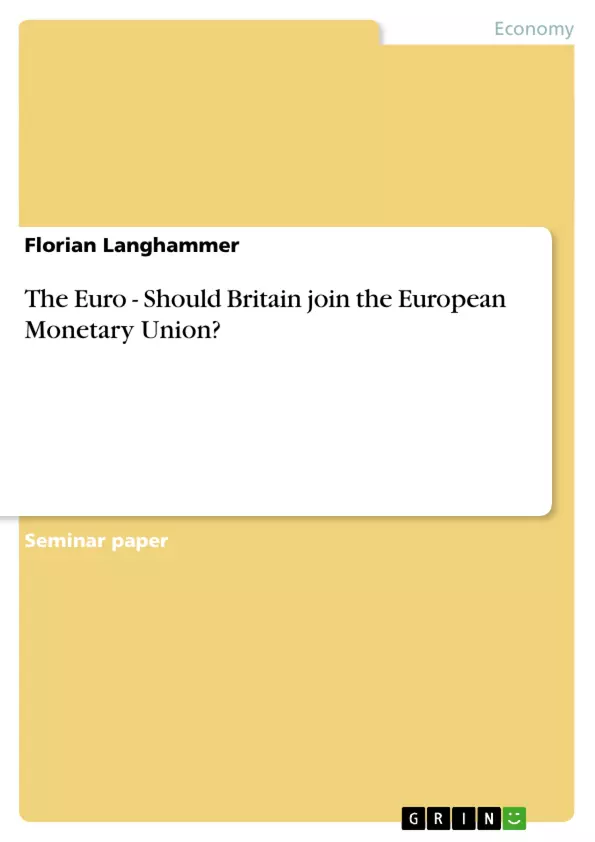HISTORICAL INTRODUCTION OF THE EMU
With the Maastricht Treaty the EC heads of state and government agreed on a three-legged "European Union" (EU) on December 9 and 10, 1991, which should include a common foreign and security policy, cooperation on domestic and security policy and the creation of a European Economic and Monetary Union (EEMU).
The European Monetary Union (EMU) is to be effected according to a concrete time schedule - the three-stage plan which was agreed upon in the Maastricht Treaty and the conversion plan which was decided December 1995.
To ensure the stability of a single currency, especially in the initial phase, the states participating in the EMU must satisfy the following convergence criteria as constituted in the Maastricht treaty:
1. Inflation criteria: Price stability with no more than 1.5 percentage points above the inflation rate of the top three member states.
[...]
Inhaltsverzeichnis (Table of Contents)
- Historical introduction of the EMU
- Discussion on Britain's decision whether to join the EMU
- Recent developments since 1. January 1999
- Macroeconomic perspectives
- Advantages
- Disadvantages
- Conclusion
Zielsetzung und Themenschwerpunkte (Objectives and Key Themes)
The coursework explores the question of whether Britain should join the European Monetary Union (EMU). It examines the historical background of the EMU, the key economic and political factors involved in Britain's decision, and the potential advantages and disadvantages of joining.
- Historical context of the EMU
- The economic and political factors influencing Britain's decision
- The potential advantages of joining the EMU
- The potential disadvantages of joining the EMU
- The economic and political implications of the EMU for Britain
Zusammenfassung der Kapitel (Chapter Summaries)
- Chapter 1 provides an historical overview of the EMU, outlining the key milestones in its development and the convergence criteria established in the Maastricht Treaty.
- Chapter 2 examines the arguments for and against Britain joining the EMU, focusing on recent developments since the euro's launch in 1999. It explores macroeconomic perspectives, including the potential advantages of lower exchange costs, increased trade, and reduced exchange rate risk, as well as the potential disadvantages of initial costs and loss of monetary policy independence.
Schlüsselwörter (Keywords)
This coursework focuses on the European Monetary Union (EMU), the Euro, Britain's decision to join or not join, macroeconomic perspectives, advantages, disadvantages, convergence criteria, exchange rate risk, trade, investment, and monetary policy independence.
- Citar trabajo
- Florian Langhammer (Autor), 2001, The Euro - Should Britain join the European Monetary Union?, Múnich, GRIN Verlag, https://www.grin.com/document/24171



